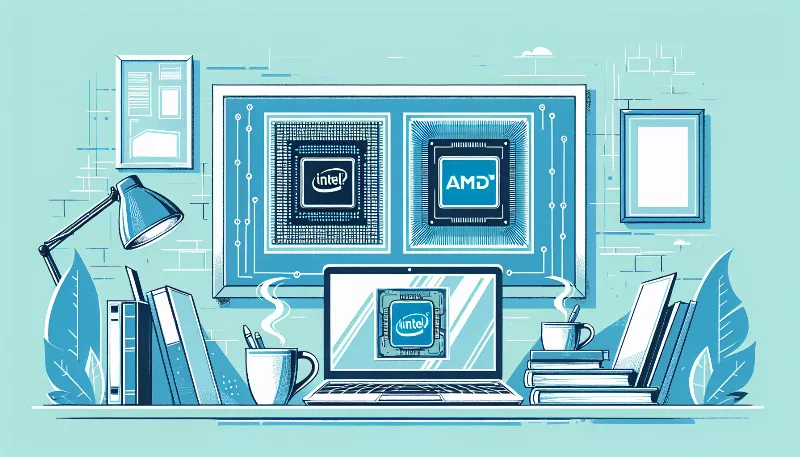What are the main differences between Intel and AMD laptop processors?
Discover the battle of CPUs! Unveil key differences between Intel & AMD laptop processors for performance, efficiency & value. Choose your power today!

Unveiling the Rivalry: Intel vs. AMD
When it comes to the heart of your laptop, the processor, two names stand out above the rest: Intel and AMD. These tech titans have been locked in a fierce battle for supremacy, each pushing the boundaries of performance, efficiency, and innovation. But what really sets them apart? Let's dive into the fascinating world of laptop processors and discover the key differences between Intel and AMD that could sway your next purchase decision!
Performance Prowess
Intel has long been lauded for its high-performance processors, particularly in the realm of single-threaded applications. With their flagship Core series, they've consistently delivered top-notch performance that's hard to beat. However, AMD has made significant strides with its Ryzen series, offering comparable, if not superior, multi-threaded performance. This makes Ryzen processors a go-to choice for multitasking and demanding workloads like video editing and 3D rendering.
Energy Efficiency Enigma
Energy efficiency is another battlefield where these two giants clash. Intel's processors, especially the newer generations, have focused on optimizing power consumption, leading to longer battery life in laptops. On the flip side, AMD has worked tirelessly to improve the efficiency of its chips, and the latest Ryzen processors boast impressive energy-saving features that narrow the gap with Intel's offerings.
Integrated Graphics Game
For those who rely on integrated graphics, the difference between Intel and AMD can be quite pronounced. Intel's Iris Xe graphics have raised the bar for what integrated GPUs can achieve, offering surprisingly good performance for casual gaming and creative tasks. AMD is not far behind with its Radeon graphics, which also deliver robust performance and support for the latest gaming technologies.
Technological Innovations
Both companies are relentless in their pursuit of innovation. Intel's Evo platform is a testament to their commitment to creating the ultimate laptop experience, with features like instant wake, fast charging, and consistent responsiveness. AMD responds with its own set of cutting-edge technologies, such as SmartShift and Precision Boost, which dynamically adjust performance to deliver the best user experience.
Price-to-Performance Ratio
When it comes to getting the most bang for your buck, AMD often takes the lead. Historically, AMD processors have offered a more attractive price-to-performance ratio, making them a favorite among budget-conscious consumers and enthusiasts alike. Intel processors tend to command a premium, but for many, the investment is justified by the brand's reputation for reliability and performance.
Compatibility and Selection
Intel's broad compatibility with a wide range of hardware and software has been a cornerstone of its success. This extensive support network means you're less likely to encounter issues when running various applications or connecting peripherals. AMD has made great progress in this area, but Intel still holds an edge in terms of widespread compatibility and selection.
Final Thoughts
In the end, whether you choose an Intel or AMD processor for your laptop depends on your specific needs and preferences. Both offer compelling reasons to be the centerpiece of your mobile computing experience. Intel shines with its high single-threaded performance and energy efficiency, while AMD impresses with its multi-threaded capabilities and value proposition. As both companies continue to innovate and refine their technologies, the choice between Intel and AMD becomes less about outright superiority and more about the nuances that align with your personal computing demands.










